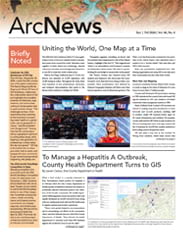Natura &Co Partners with Traditional Communities to Equitably Access Natural Resources While Preserving Amazon Rainforest’s Biological Diversity
Although it covers only about 1 percent of Earth’s surface, the Amazon rainforest plays a vital, worldwide role in processing carbon, providing water, and preserving biodiversity. The Amazon helps stabilize the earth’s climate by storing hundreds of billions of tons of carbon dioxide; its trees contribute 20 billion tons of water each day to the atmosphere; and it is home to about 10 percent of the world’s wildlife species, according to the World Wildlife Fund.
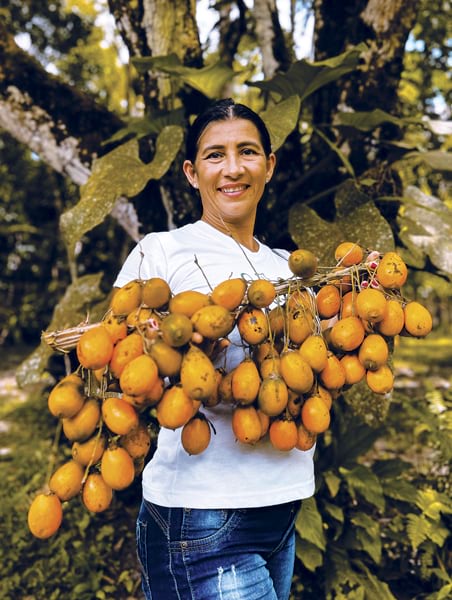
But the Amazon faces a host of challenges related to climate change, including deforestation and infrastructure development. And the human communities that live in and depend on the Amazon are finding it more difficult to harvest rainforest-based resources in ways that are sustainable and equitable.
Natura &Co, a Brazilian cosmetics group that operates around the world and includes the brands Natura and Avon, sources many of its ingredients from the Amazon. The company is known for collaborating with traditional communities—such as Amazonian family farmers, residents of quilombos (remote settlements founded by Brazilians of African descent), riverside communities, and Indigenous people—to promote environmental and economic sustainability when harvesting local flora. As a B Corp—a designation that shows that a business has high social and environmental standards, sound corporate governance, and operates with transparency—Natura &Co is helping address the challenges the Amazon faces by focusing on sociobiodiversity: the balance between safeguarding biological diversity and enabling humans to equitably benefit from natural resources.
ArcGIS provides the technological foundation for Natura &Co’s sociobiodiversity supply management system. Using ArcGIS Pro, ArcGIS Enterprise, ArcGIS Survey123, and other Esri products, the company has developed what it calls NaturaGIS to trace its supply chain from the raw ingredients to what ends up in cargo shipments, as well as to maintain transparency in its business operations.

“Tracing the source of our raw ingredients—what, when, from where, and from whom we purchase—is a market requirement and a fundamental premise for our fair and ethical trade practices,” said Mauro Costa, head of Natura &Co’s sociobioeconomy department. “[ArcGIS] is a strategic part of our decision-making process.”
Tracing Complex Supply Chains with GIS
Natura &Co’s founding company, Natura, was the first publicly traded company in the world to receive B Corp certification in 2014, according to the Climate Governance Initiative, a nonprofit organization that helps corporate boards of directors improve their companies’ climate resilience. This was the same year that the company incorporated ArcGIS technology into its operations.
Initially, GIS was used as a repository for the company’s geographic database—which contained information about local suppliers—as well as for cartographic production and data visualization. Over the last four years, as Natura &Co has set out to achieve its Commitment to Life plan—aimed at tackling the climate crisis, safeguarding the Amazon, and protecting human rights—the company has expanded its use of ArcGIS technology considerably. It now employs NaturaGIS throughout its operations.
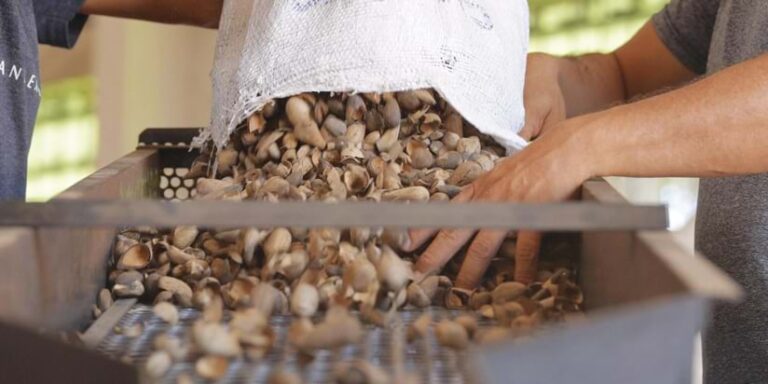
Each year, Natura &Co processes hundreds of tons of raw ingredients to make its products—from murumuru nuts, which are good for hair care, to priprioca plants, whose aromatic roots are used to produce essential oils. These ingredients are harvested by dozens of suppliers organized into cooperatives, called sourcing communities, that include thousands of families. One of Natura &Co’s goals is to more equitably distribute its raw material sourcing by increasing the number of sourcing communities it relies on in the Amazon. Supply chains like this—that are aiming to be sociobiodiverse—are complicated, requiring careful control and management.
“The complex process to which we adhere allows us certification from the internationally recognized Union for Ethical BioTrade [UEBT],” said Costa. “UEBT certifies that ingredients from nature are sourced through systems that respect people and biodiversity. Implementing NaturaGIS has allowed us to double the volume of our raw ingredient inputs while sustaining the strict quality control required for UEBT certification.”
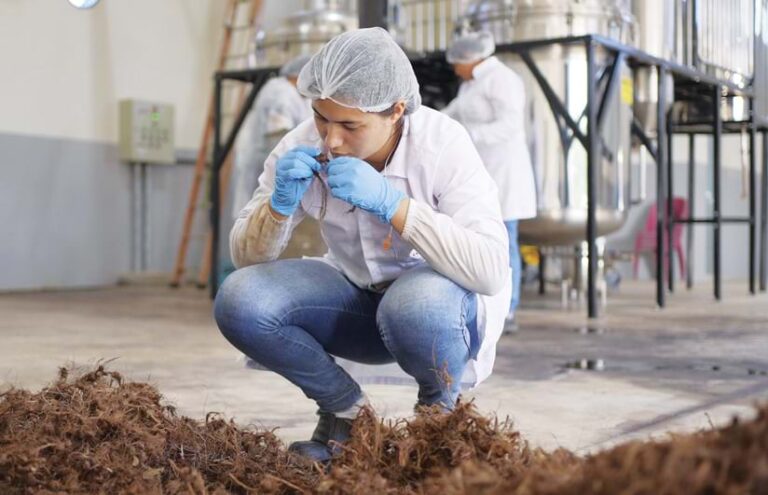
Suppliers and field analysts enter data into NaturaGIS using forms built with Survey123. With support from field agents and analysts, members of sourcing communities enter location and socioeconomic information about each supplier family into Survey123. They also use the app to record data related to the ingredients the sourcing communities supply, including what they are (such as raw fruits, nuts, and seeds or processed oils and essential oils) and when and how much will be delivered.
“We input family registration data, cargo manifests, and occasional surveys as requested by our sociobioeconomy processes and control,” explained Carlos Talini, former technical manager at Natura &Co. “The data are sent to both ArcGIS Enterprise and our geodatabase, feeding a variety of outputs such as [maps] in Map [Viewer], [ArcGIS] StoryMaps [stories], and dashboards. These applications serve as the interface for users accessing regional data.”
For example, area managers, who work closely with supplier communities to meet Natura &Co’s raw materials demand, use dashboards built with ArcGIS Dashboards and ArcGIS Experience Builder to monitor key supply indicators. These include the number of supplier families, the raw materials expected to be provided each year, and the total area impacted by the company’s sustainable operations. Area managers also use dashboards to keep tabs on harvest histories and track cargo shipments in near real time. This helps the area management team determine sourcing communities’ production capacity and strategize about where to invest Natura &Co’s resources.

Other company collaborators use the system to extract information about company operations related to sociobiodiversity. And Natura &Co’s geotechnology experts use ArcGIS Pro to edit data; conduct geospatial analysis; and produce maps on a range of topics, from supply estimates to deforestation.
Currently, use of NaturaGIS is limited to internal staff members and approved suppliers.
Expanding Traceability and Participatory Mapping
Natura &Co plans to evolve its use of GIS by continuing to employ the technology to optimize operational processes both internally and for supply partners. For instance, the company is augmenting its use of GIS to document the origins of its raw ingredients.
“We are expanding our traceability forms,” said Costa, referring to the Survey123 forms that Natura &Co uses to track its supply chain. “To amplify the information obtained from family farming and extractive areas, detailed family registration and packing list information will be collected. This includes traceability processes that capture information about each step the community takes to transform raw ingredients [into usable products], such as drying, nut cracking, depulping, sorting, and separation. Survey123 will also communicate with printers to produce sturdy labels, specifically selected for the Amazonian environment, that will identify the biodiversity materials.”
Supplier communities will also have access to an Experience Builder app that they can use to monitor ingredient processing information in near real time. In addition, the company has plans to extend its participatory mapping efforts, which will allow it to gather more information about remote production areas.
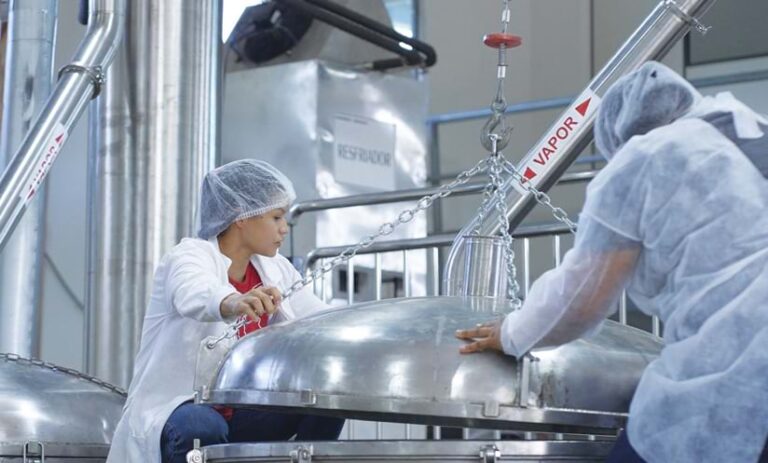
“This data is crucial for gaining a deeper understanding of the areas in which we operate,” said Costa. “[It] will serve as the foundation for other important data, such as production estimates, harvesting forecasts, and the monitoring of land use and occupancy.”
Costa believes that these enhancements to NaturaGIS will boost the company’s ability to meet market demands and strengthen its sustainability commitments in the Amazon region.
The company is planning to employ GIS to make its web environment more engaging as well. Using apps such as Experience Builder, the website will eventually combine diverse content—including maps and data from government agencies and nonprofit organizations—to allow employees and partners to better visualize Natura &Co’s operations. It will also enable them to customize their views more than they can right now.
“Even though we have effective tools for essential operations, the growing complexity of our work calls for more flexible solutions like those offered through Experience Builder,” said Talini. “Enhancing our system with more robust traceability and more efficient operational control will provide greater support for our sociobiodiversity and Amazon conservation efforts.”

